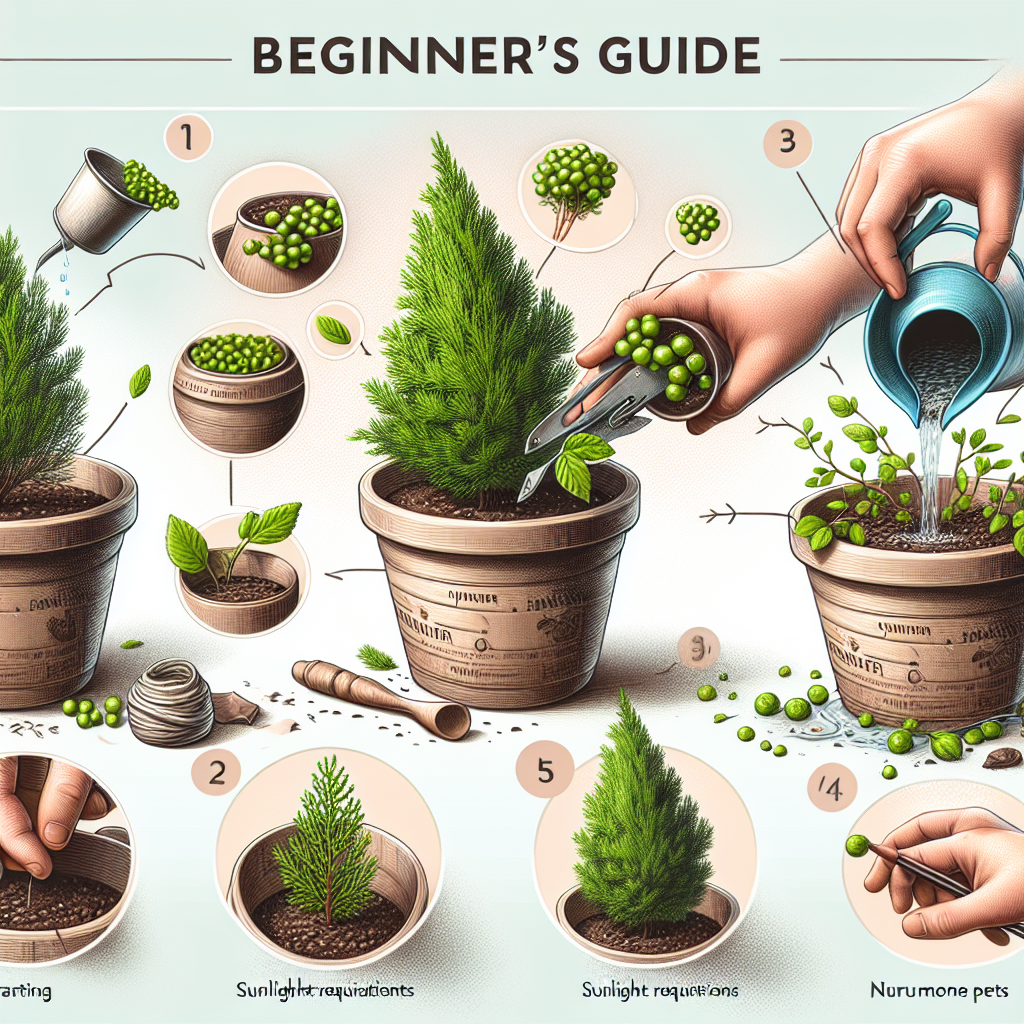Juniper plants are beautiful evergreen shrubs that are popular for their hardiness and versatility in landscaping. While they are typically grown in the ground, junipers can also thrive in pots, making them a great choice for beginner gardeners with limited space. Growing juniper in pots is a rewarding experience that allows you to enjoy the beauty of these plants up close while adding a touch of greenery to your indoor or outdoor space.
In this beginner’s guide, you will learn everything you need to know about growing juniper in pots. From choosing the right container and soil mix to proper watering and maintenance tips, this article will provide you with all the information you need to successfully grow healthy and happy juniper plants in containers. Whether you’re looking to add some greenery to your patio, balcony, or indoor space, growing juniper in pots is a fun and easy way to bring nature into your home.
**Choosing the Right Container**
When it comes to growing juniper in pots, choosing the right container is essential for the health and growth of your plant. Select a pot that is large enough to accommodate the roots of your juniper plant while also providing adequate drainage. Avoid containers that are too small or shallow, as they can restrict root growth and lead to root rot. Opt for a pot with drainage holes at the bottom to allow excess water to escape, preventing waterlogged soil which can cause root rot.
**Selecting the Right Soil Mix**
Junipers thrive in well-draining soil that is slightly acidic. When planting your juniper in a pot, use a high-quality potting mix specifically formulated for cacti and succulents, or make your own by combining equal parts of peat moss, perlite, and coarse sand. This will ensure that excess water drains quickly from the soil, preventing root rot and other moisture-related issues. Avoid using heavy or compacted soils that retain water, as they can suffocate the roots of your juniper plant.
**Planting Your Juniper**
To plant your juniper in a pot, start by filling the container with a layer of soil mix at the bottom. Gently remove your juniper from its nursery container and loosen any compacted roots before placing it in the pot. Fill in the remaining space around the plant with more soil mix, pressing gently to eliminate air pockets. Make sure not to bury the trunk of your juniper too deeply in the soil, as this can lead to stem rot. Water thoroughly after planting to help settle the soil around the roots.
**Watering Your Juniper**
Proper watering is key to keeping your potted juniper healthy and happy. Unlike many other houseplants, junipers prefer drier conditions and should be allowed to dry out between waterings. Check the moisture level of the soil by sticking your finger into it – if it feels dry about an inch below the surface, it’s time to water. Water thoroughly until excess water drains out of the bottom of the pot, then allow it to dry out again before watering next time.
**Light Requirements**
Junipers thrive in full sun but can tolerate partial shade as well. Place your potted juniper near a sunny window or outdoors where it will receive at least six hours of direct sunlight per day. Rotate your plant occasionally to ensure even growth on all sides.
**Fertilizing Your Juniper**
During its growing season (spring through fall), fertilize your potted juniper every 4-6 weeks with a balanced liquid fertilizer diluted by half strength or use a slow-release fertilizer following package instructions.
**Pruning and Maintenance**
Junipers are relatively low-maintenance plants but may benefit from occasional pruning for shaping or removing dead or damaged branches. Use clean pruning shears to make cuts just above a set of healthy leaves or branches.
Growing Junipers FAQ:
Q: Can I keep my potted juniper indoors year-round?
A: While most varieties of junipers prefer full sun outdoors, some cultivars can be kept indoors as long as they receive enough light.
Q: How often should I repot my potted juniper?
A: Repotting every 2-3 years is recommended for young plants; older plants may only need repotting every 4-5 years.
Q: Why are my Junipers turning brown?
A: Brown needles on Junipers are normal during winter months but may indicate overwatering if occurring during growing season.
Q: Can I grow multiple Junipers together in one large container?
A: Yes! Grouping multiple Junipers together can create an attractive display; just make sure there is enough space for each plant’s roots.
In conclusion **Growing Junipers**, while not without its challenges requires only attention than anything else! By following these simple steps outlined above you’re any novice gardener should find success cultivating these beautiful evergreens!













